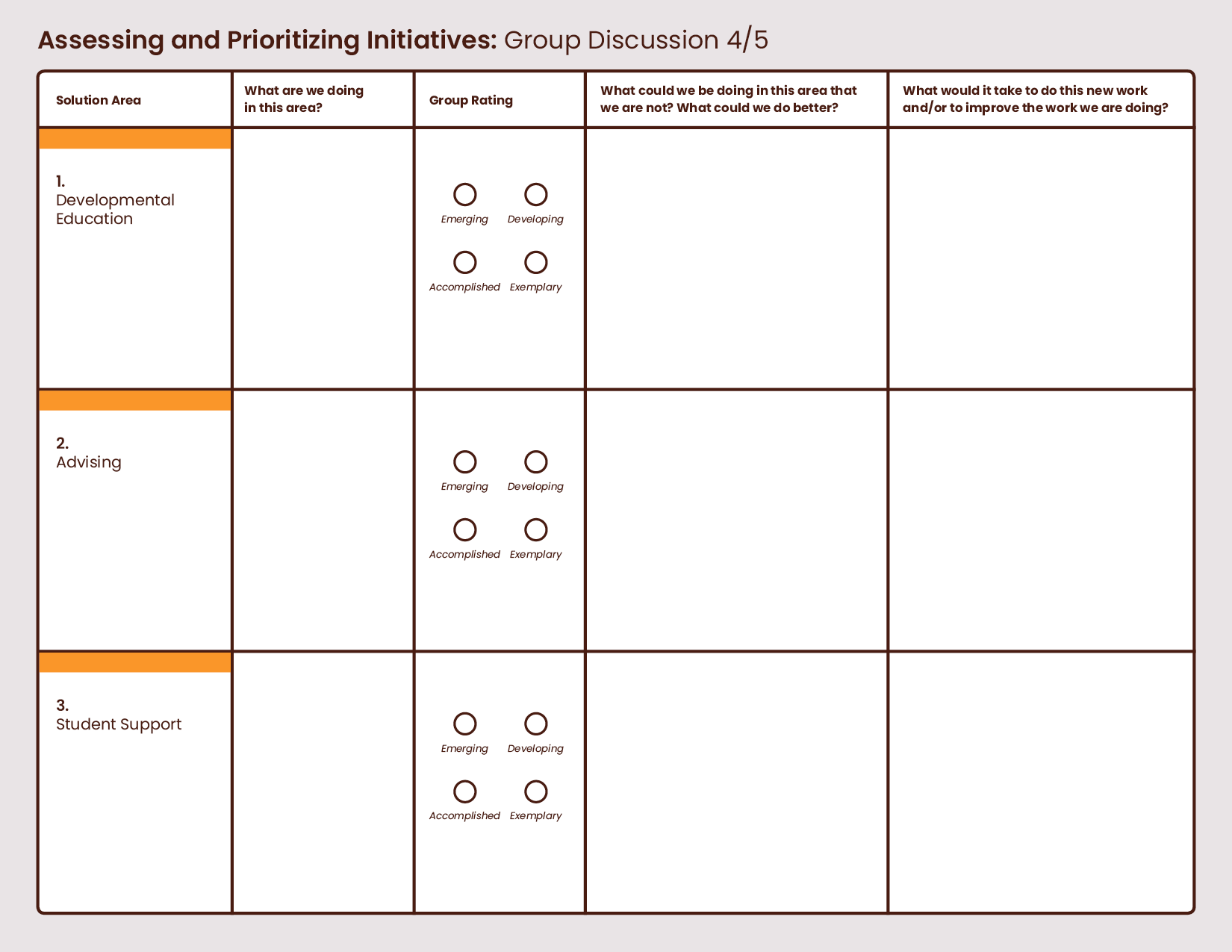Assessing and Prioritizing Initiatives
Before knowing which direction to head on your transformation journey, first understand where you are. Research shows that institutions successful in supporting a diverse set of students have prioritized similar operating capacities and solution areas. This activity guides you and your team through assessing each of these areas.
- Suggested time: 1-2 hours
- Materials: Pens, worksheets, whiteboard or large sheet of paper
- When to use: When your team wants to assess and prioritize existing or potential initiatives
Steps
Print out the Operating Capacities and Solution Areas reflection worksheets for each member of your team, or recreate the categories on a whiteboard or large sheet of paper.

Pass out both sheets and give your team 20 minutes to individually reflect on how they think your institution is doing in regards to each operating capacity and solution area.
After you and your team have completed your individual reflections, take an hour to come together as a group to discuss. The goal of this discussion is to reach consensus about a rating for each operating capacity and solution area. Remember to stay mindful of the balance between growth opportunities and areas where your institution flourishes, as this help keeps your team engaged and excited about your transformation journey.
Given the length and complexity of your institution’s transformation journey, your team can maximize motivation and impact by selecting a subset of areas to prioritize at any given time. Using your team’s group rating for each area as a guide, identify your institution’s biggest gap to fill and biggest strength you can build on both within operating capacities and solution areas.
After selecting your top four priorities, take 20 minutes to brainstorm what your team could be doing in these areas and establish a plan for beginning and completing the efforts. For a deeper dive, the Team Brainstorm, Initiative Inspiration, Initiative Blueprint, and Planning Next Steps tools are great ideation and planning resources.

